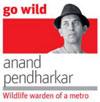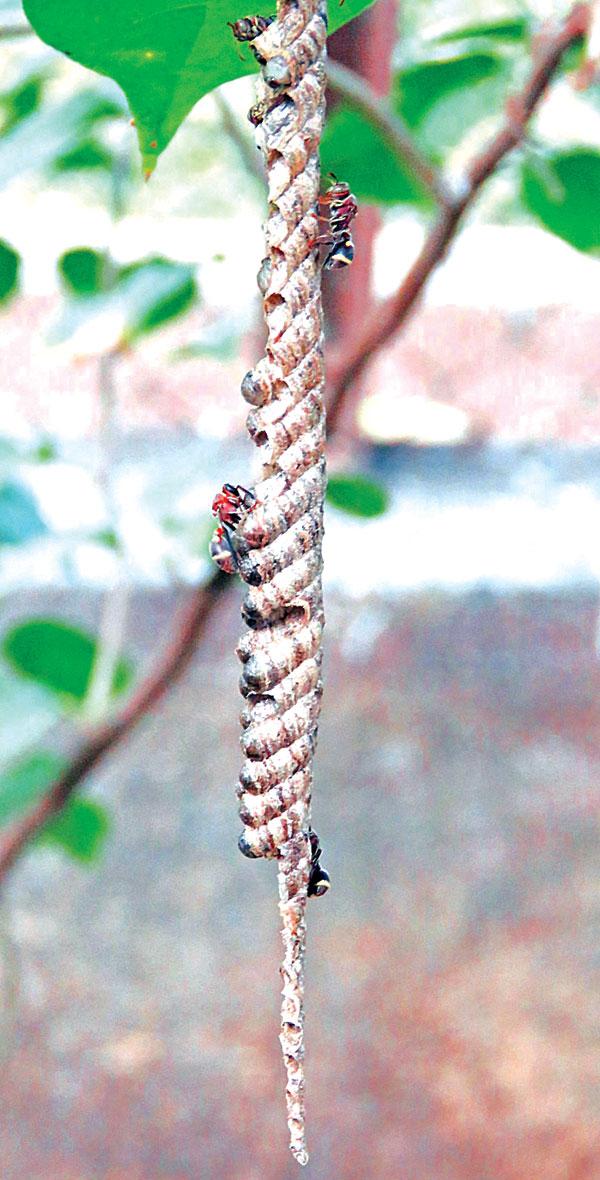Respect paper wasps from afar, a lesson learnt twice over

A paper wasp colony
 In this day and time, when even cement concrete constructions come crashing down at the slightest downpour or mildest earthquake, imagine staying in a paper house! Many creatures have made it their forte to pulp leaves and other natural materials and mix them with their saliva or body fluids and construct paper houses.
In this day and time, when even cement concrete constructions come crashing down at the slightest downpour or mildest earthquake, imagine staying in a paper house! Many creatures have made it their forte to pulp leaves and other natural materials and mix them with their saliva or body fluids and construct paper houses.
These houses are amazing for their capacity to withstand heavy rains and winds and yet provide a sturdy structure to support an entire colony. The Paper Wasp is one such creature, which specialises in making one of the lightest paper homes.
ADVERTISEMENT

A paper wasp colony
My first encounter with a Paper Wasp was at the age of five when I touched its paper-like colony. A wasp stung me with an immobilising bite on my left earlobe. I can still recollect the stinging pain, increased local temperature and inflammation. Since then, I avoid these slim-waisted aggressive attackers.
But when I took to photography during college, I was inspired to take pictures of these colonial wasps. With my limited 100mm lens, I had to approach the umbrella-shaped nest from close. And, once again, painful bites were delivered to my face, ears, fingers and lips. A lesson learnt the hard way.
Paper wasps belong to the Genus Polistes or Vespa, both from Family Vespidae, which includes potter wasps, yellowjackets and hornets. They are usually black, brown or red, with yellow markings on their body. There are three castes among wasps, viz. the queen (a dominant egg-laying female), males and workers.
The workers (females) and the males of the colony don't survive the winters. Only the fertilised queen hibernates in the cracks of trees over winter and a new colony of 20 to 30 wasps is formed soon after. A dominant queen builds the nest, while workers collect nesting material and raise the larvae.
If a queen is unable to build a colony of her own, she finds another colony and surrenders to the existing queen and functions as a worker. The umbrella-shaped nest begins with a petiole (base) which is further continued as open hexagonal cells where the eggs are laid. The cells remain open until the larvae undergo metamorphosis, pupate and get into the adult stage over a period of approximately three weeks.
Since rainwater and ants are the biggest enemies of paper wasps, hence, they diligently water-proof their nests with secreted chemicals. These also repel ants and prevent loss of eggs or brood. The sting of a female wasp can be fatal to those who are allergic to their venom. If a wasp colony is attacked, they release pheromones that alert other colonies nearby and unleash a stinging frenzy. Wasps thus evoke fear among many animals, including squirrels, dogs and monkeys.
Wasps feed on nectar and are excellent agents for pollination. Ecologically, they play the role of bio-controllers, as they consume larvae of butterflies, moths and beetles, effectively controlling the populations of local pests.
So, the next time you come across a paper wasp nest, from a respectful distance, observe their beautiful paper architecture. Your next paper housing design may emerge from casual observations of a paper wasp colony.
Write in to Anand at sproutsenvttrust@gmail.com
 Subscribe today by clicking the link and stay updated with the latest news!" Click here!
Subscribe today by clicking the link and stay updated with the latest news!" Click here!







